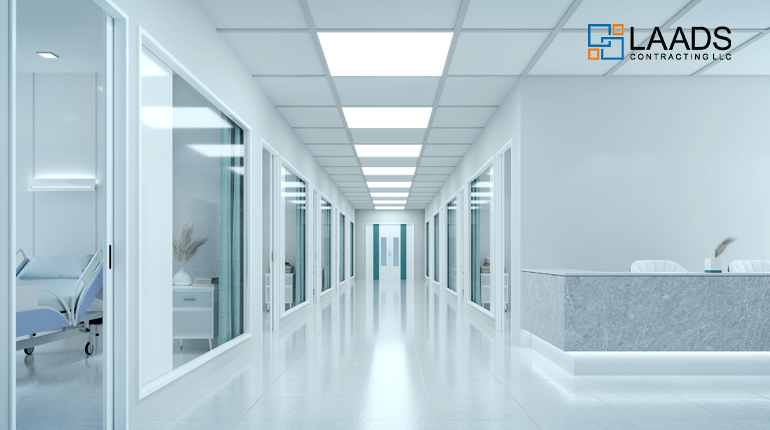Interior design plays a key role in healthcare settings, profoundly influencing the experience of patients, medical practitioners, and visitors within hospitals and clinics. The design of these spaces extends far beyond aesthetics, focusing primarily on functionality, comfort, and fostering a healing environment. The innovative design elements cater to aesthetic considerations and contribute to the overall quality of care and experience within these medical facilities.
Functional and Efficient Layouts
Hospitals and clinics require detailed planning to ensure efficient functionality. Health Care, Hospital and Clinic Interior Design in Dubai, UAE helps to optimize the workflow within the healthcare facility, making it easier for medical professionals to move between patient rooms, treatment areas, and other essential spaces. This layout design also enhances patient care by minimizing wait times and streamlining processes. Clear division and efficient layouts help reduce the risk of infection by maintaining proper hygiene protocols and allowing for easier cleaning and maintenance. It also aids in patient confidentiality by ensuring private spaces for consultations and discussions.
Patient Comfort and Well-being
Interior design in healthcare revolves around creating an environment that promotes patient comfort and aids in their recovery. This involves selecting soothing color palettes, comfortable furnishings, and ample natural light to create a calming atmosphere, crucial for patients undergoing treatment or recovery. A hospital’s interior design should provide enough privacy and personal space so that patients can feel more comfortable. This includes soundproofing, well-designed curtains, and enough space for personal belongings.
Infection Control and Cleanliness
In healthcare settings, design elements are frequently customized to support infection control and hygiene. Antimicrobial, easily cleaned, and resistant to bacteria and pathogens materials should be used in hospital interiors. The use of non-porous materials and finishes helps control the growth and spread of harmful microorganisms. Adequate ventilation and efficient HVAC systems prevent the circulation of airborne contaminants, ensuring cleaner air throughout the hospital.
Brand Identity
Brand identity plays a specific role in healthcare interior design for hospitals and clinics. It goes beyond mere aesthetics and colors; it encompasses the essence, values, and mission of the healthcare institution. Interior design elements such as logos, color schemes, signage, and visual elements are strategically incorporated to reflect the brand’s identity and create a recognizable atmosphere. The design elements also communicate the institution’s commitment to quality, professionalism, and care, thereby supporting its brand image. Ultimately, a well-executed interior design aligned with brand identity contributes to a positive and optimistic environment for all stakeholders.
Integration of Technology
Advanced medical technology is seamlessly integrated into the design, ensuring that it enhances patient care without disrupting the overall ambiance. Smart design incorporates technology discreetly, making it accessible and user-friendly for medical staff while maintaining patient comfort. Implementation of smart systems, such as automated lighting, temperature control, and voice-activated interfaces, not only improves energy efficiency but also contributes to a more patient-centric and comfortable environment.
Well-designed isolation rooms with negative air pressure and separate entrances minimize the spread of contagious diseases within the hospital environment. LAADS, as the leading Interior Fit Out Company in Dubai, UAE, brings an exceptional commitment to creating healthcare spaces that incorporate these essential elements. Our expertise and innovative approach contribute significantly to elevating the healing environment within hospitals and clinics, enhancing patient experiences, and fostering an atmosphere conducive to well-being and recovery.






